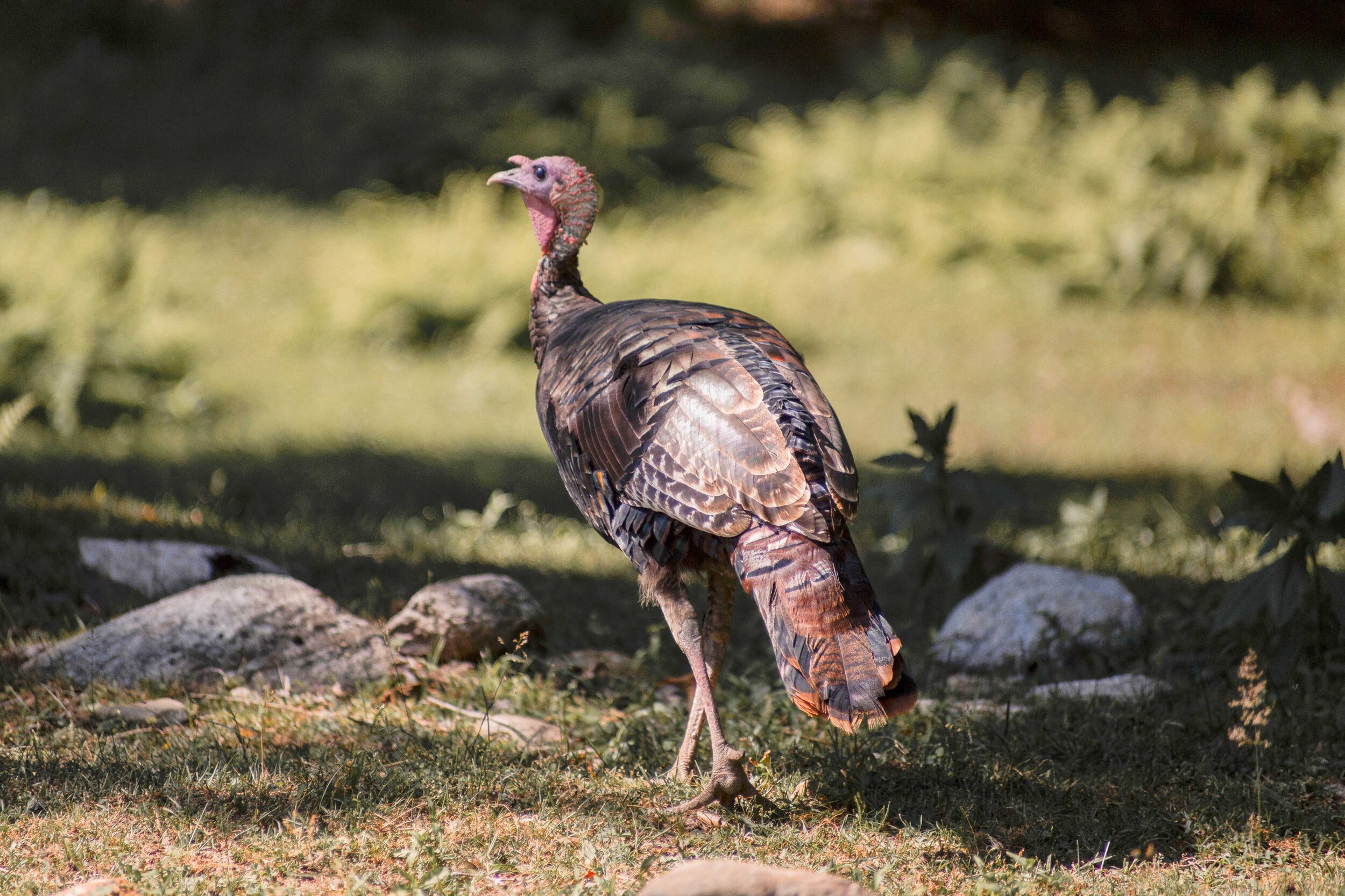Wild Turkeys

The Tasty Fall Fowl
by Torrey Douglass
One of my favorite things about fall is the prospect of getting some wild turkey on the table. When the season is right* and the hunting license is in his pocket, my son will keep one ear open at all times for the birds’ telltale gobble. They can often be found in flocks walking through the fields and forests in the hour or two just after dawn or just before dusk.
It’s best to note the route the birds are taking and quietly find a spot farther along it, then take your shot when they pass by. Sneaking up on them is a much trickier prospect. Regulations permit using a shotgun, air rifle, or archery equipment to take a turkey of either sex. Aim for the head to preserve the meat. If you’re stealthy and have good aim, this hearty game bird can become the central feature of a foraged fall feast.
You want to tread gently when cooking a game bird. The white and dark meats need different cooking times, so it’s better to break down the turkey into parts and cook them separately rather than roast the whole bird. The meat is lean and can dry out quickly, but has a richer flavor than its domesticated counterpart. That wonderful flavor likely is due to their omnivorous diet—they will eat pretty much anything, be it berries, seeds, insects, and even small reptiles.
So when fall is winding down and the days are growing short, get yourself a hunting license and take off into the great outdoors (where you’ve been given permission, of course), and you just might bring home this most delicious forageable fowl.
*The season for hunting wild turkey in 2020 begins November 14 and lasts through December 13. Be sure to check out wildlife.ca.gov to familiarize yourself with the rules and regs, and get the proper license before you set out to catch your own wild turkey (limit 2 per season).
Wild Turkey on the Grill
A wild turkey’s legs and breasts are best for eating, and brining works well. For the breasts, marinate in soy sauce, kosher salt, juice of a lemon, and fresh ground black pepper.
Remove from marinade, sprinkle with piment d’ville and herbs de provence, and put on the barbeque. If your barbeque is outdoors and weather is not obliging, cut into chunks and put into a cast iron dutch oven along with previously sauteed onions. Add some root vegetables and whole garlic cloves, cover with stock and cook for 2-3 hours in a 350˚ oven. Veggies should be nicely softened and meat fork-tender, swimming in a delicious gravy. Great served with a rice pilaf. Pro tip: heat the pan in the oven for 10 minutes prior to adding the meat, stock, and vegetables.
